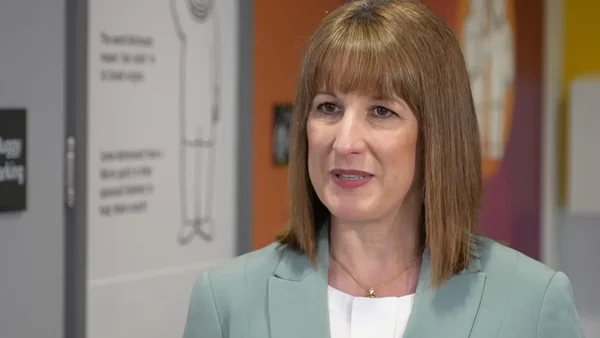Lets get started...
Looking to reduce your tax bill while supporting innovative British businesses? EIS tax relief offers one of the UK's most generous tax incentives for investors willing to back early-stage companies.
Our Pie tax app helps thousands of investors track their EIS investments. Or if you're just here to get to grips with it all, let's break it down!
What Is EIS Tax Relief?
The Enterprise Investment Scheme (EIS) encourages investment in smaller, higher-risk trading companies by offering significant tax breaks. It’s been a game-changer for many investors. When you invest in EIS-qualifying shares, you can claim 30% income tax relief on investments up to £1 million per tax year. This limit increases to £2 million if investing in knowledge-intensive companies.
Your investment must be held for at least three years to qualify. The company must also meet specific criteria, including having fewer than 250 employees and assets under £15 million. EIS eligible companies must also carry out a qualifying trade and not be listed on a recognised stock exchange at the time of investment.
To access EIS tax relief, investors must meet certain requirements. Qualifying investors are individuals who are not connected to the company and who invest their own money, making them eligible to claim EIS tax relief. There are annual investment limits, and the investment process typically involves conducting due diligence, ensuring the company has obtained advance assurance or approval from HMRC, and then making the investment.
The relief works by reducing your income tax bill pound-for-pound by 30% of your investment amount. Relief applies only if you hold the shares for at least three years and both the investor and company remain compliant with EIS rules throughout this period. This dramatically improves the risk-reward profile of startup investing.
EIS Investments and Eligibility
EIS investments offer a powerful suite of tax reliefs for investors who are looking to support early stage companies in the UK. Through the Enterprise Investment Scheme (EIS), you can access income tax relief, capital gains tax exemptions, and even inheritance tax relief, making these investments highly attractive from a tax planning perspective.
To qualify for EIS tax reliefs, the company you invest in must be an SME with gross assets of less than £15 million and fewer than 250 full-time employees at the time of investment. The business must also be carrying out a qualifying trade and not be listed on a recognised stock exchange.
For investors, you can claim income tax relief of up to 30% on EIS investments, provided you have sufficient income tax liability in the tax year you invest. The maximum amount you can invest and claim relief on is £1 million per tax year, or up to £2 million if you invest in knowledge intensive companies.
The EIS is specifically designed to channel investment into early stage and innovative businesses, helping them grow while offering investors significant tax incentives. By meeting the eligibility criteria, both companies and investors can benefit from the full range of EIS tax reliefs, including the ability to claim income tax relief, exemption from capital gains tax on qualifying assets, and inheritance tax relief after the required holding period.

How EIS Tax Relief Works: A Simple Example
Let’s say you invest £20,000 in an EIS-qualifying company. You’ll receive 30% of this amount as income tax relief, which equals £6,000. Note that the maximum investment you can make in EIS to qualify for income tax relief is £1,000,000 per tax year (or £2,000,000 if at least £1,000,000 is invested in knowledge-intensive companies).
This £6,000 comes directly off your income tax bill for the year. If your tax bill was £10,000, it would reduce to £4,000 after claiming EIS relief. If you are an additional rate taxpayer, the relief still applies at 30%, but the benefit may be even more significant given your higher tax exposure.
Your effective investment cost is now only £14,000, not £20,000. This instantly improves your potential return on investment.
If the company succeeds and your shares double in value to £40,000, your gain based on your effective cost would be £26,000 rather than £20,000. That’s a much better return percentage.
The best part? When you eventually sell those shares after the minimum three-year holding period, any gain is completely free from Capital Gains Tax, meaning you benefit from tax free growth on your investment.
Advanced EIS Example With CGT Benefits
Capital gains deferral allows you to postpone paying capital gains tax (CGT) by reinvesting your chargeable gains into EIS-qualifying shares within specific timeframes, optimising your tax liabilities and enabling ongoing tax planning strategies. Imagine you’ve sold a buy-to-let property and made a £100,000 capital gain. Normally, you’d pay CGT at either 18% or 28%, potentially costing you £28,000.
However, if you invest that £100,000 gain into EIS-qualifying shares, you can defer the capital gains tax (CGT) liability until you eventually sell those EIS shares. This is known as CGT deferral relief, which allows eligible investors to defer CGT by reinvesting gains into qualifying EIS schemes, provided certain criteria and timing requirements are met. By reinvesting your chargeable gains in this way, you can optimise your tax position and benefit from the EIS structure.
You’ll also receive the standard 30% income tax relief worth £30,000. Combined, that’s £58,000 in immediate tax benefits. If you hold your EIS shares for at least three years and meet all the qualifying conditions, you may also benefit from CGT exemption on any gains made from the EIS investment itself, meaning no CGT is due on profits from the sale of those shares.
If your EIS investment performs well, your deferred gain might be offset by other losses when you eventually dispose of the shares. EIS can also help offset other gains beyond the main capital asset, providing additional flexibility in your tax planning. This deferral relief mechanism allows you to defer or exempt capital gains, offering significant tax advantages. When the deferred gain eventually becomes chargeable, it will be taxed at the prevailing rate of CGT at the time of disposal, which may differ from the rate at the time of the original gain.

Inheritance Tax Relief
One of the lesser-known but highly valuable benefits of EIS investments is inheritance tax relief. EIS shares typically qualify for Business Relief, which means that after holding your EIS shares for at least two years, they can be passed on to your beneficiaries free from inheritance tax. This can result in substantial tax savings, especially for investors with larger estates who are looking to minimise their tax liability for future generations.
In addition to inheritance tax relief, EIS investments also provide income tax relief and capital gains tax exemptions, making them a comprehensive tool for tax-efficient investing. By holding EIS shares for the required period, you not only support innovative UK businesses but also ensure that your investments can be transferred to your heirs without incurring inheritance tax. This combination of reliefs makes EIS investments a strategic choice for those seeking to optimise their estate planning and overall tax position.
EIS Funds and Diversification
EIS funds offer investors a smart way to diversify their portfolios while still enjoying the full range of EIS tax advantages. By pooling capital from multiple investors, EIS funds invest in a selection of EIS-qualifying companies, spreading risk across a range of early stage businesses rather than relying on the success of a single company.
These funds are managed by experienced professionals who conduct rigorous due diligence to identify companies with strong growth potential. As an investor, you can claim income tax relief on your investment in an EIS fund, just as you would with a direct EIS investment. Additionally, any gains realised within the fund are exempt from capital gains tax, further enhancing your potential returns.
Investing through an EIS fund allows you to benefit from the same tax reliefs, income tax relief, capital gains tax exemption, and loss relief, while reducing the risk associated with investing in individual startups. This makes EIS funds an attractive option for those seeking both tax efficiency and a balanced investment approach.
Knowledge Intensive Companies
Knowledge intensive companies (KICs) are a key focus of the Enterprise Investment Scheme (EIS), offering enhanced opportunities for both investors and innovative businesses. These companies are defined by their commitment to research, development, and innovation, and must meet specific criteria, such as employing a significant proportion of staff in R&D roles and developing intellectual property.
Under the EIS, knowledge intensive companies can receive up to £2 million in investment per tax year, double the standard limit. For investors, this means you can claim income tax relief of up to 30% on a larger investment, provided you have sufficient income tax liability. In addition to income tax relief, investments in KICs benefit from capital gains tax exemptions and inheritance tax relief, making them especially attractive for those seeking to maximise tax incentives.
By supporting knowledge intensive companies through the EIS, investors not only access valuable tax reliefs but also contribute to the growth of the UK’s most innovative and high-potential businesses. The scheme is designed to encourage investment in sectors that drive technological advancement and economic growth, making EIS investments in KICs a win-win for both investors and the wider economy.
What Happens If Your EIS Investment Fails?
One of the most valuable aspects of EIS is EIS loss relief, which provides a safety net if things don’t go to plan. I learned this the hard way with my first startup investment.
Let’s say you invested £50,000 in an EIS company that unfortunately goes bust. You’ve already claimed £15,000 in income tax relief (30% of £50,000).
Your at-risk capital is therefore £35,000. You can claim EIS loss relief on this amount at your highest income tax rate. If you’re a 45% taxpayer, that’s worth £15,750. To claim EIS loss relief, you need to complete the relevant section on your self-assessment tax return or submit the claim directly to HMRC, usually using the EIS3 certificate provided by the company. The process of claiming relief involves gathering the necessary documentation, such as the EIS3 form, and submitting your claim within the required timeframe after the loss is realised.
In total, your £50,000 investment has cost you only £19,250 (£50,000 - £15,000 - £15,750). This limits your downside to less than 40% of your original investment. This significant downside protection makes EIS investments much more attractive for those willing to support innovative but risky businesses.

How To Claim Your EIS Tax Relief
Claiming EIS relief is straightforward but requires some paperwork. The company will issue you an EIS3 certificate after your investment has been held for at least four months. To claim EIS income tax relief, you must use this certificate to complete the necessary forms and ensure all documentation is accurate and available for HMRC.
Once you have this certificate, you can begin claiming relief via your Self Assessment tax return. Enter the details in the ‘Additional Information’ section.
For investments made in the current tax year, the EIS income tax relief will reduce your tax bill immediately. If you wish, you can carry the relief back to the previous tax year to offset prior tax liabilities. Keep all documentation safe, HMRC may ask to see your EIS3 certificates if they conduct an enquiry into your tax affairs.
Common EIS Pitfalls to Avoid
Don’t invest solely for tax reasons. The underlying business must have strong growth potential to make the investment worthwhile.
Check the company has advance assurance from HMRC that it qualifies for EIS. Without this, you risk losing the tax relief if HMRC later decides the company doesn’t qualify. Note that only certain types of shares, such as subscriber shares, may be eligible for EIS qualification, so ensure you understand the share structure before investing.
Remember the three-year holding period. Selling before this time will result in the clawback of your income tax relief. If the company ceases to qualify for EIS within this period, the tax relief may also be reclaimed by HMRC.
Don’t exceed the annual investment limit of £1 million (or £2 million for knowledge-intensive companies) if you want to claim the full tax relief. Make sure you understand when the relief applies, as eligibility depends on meeting all EIS conditions.
Final Thoughts
EIS tax relief offers a powerful combination of income tax relief, CGT deferral, and loss protection. These benefits can dramatically improve investment returns.
While the tax benefits are substantial, always remember that EIS investments are in early-stage companies that carry significant risks.
The scheme works best as part of a diversified portfolio. Choose companies with genuine growth potential beyond just the tax advantages.
Pie tax: Simplifying EIS Tax Relief
Managing your EIS investments and claiming all available tax reliefs can be complex. Pie tax, the UK's first personal tax app, makes this process effortless. Our smart dashboard tracks all your EIS certificates in one place. It automatically calculates your 30% relief and shows exactly how much you can claim each tax year.
The app seamlessly integrates with your Self Assessment. All EIS reliefs are properly claimed and documented for HMRC's records.
Curious to see how much tax you could save? Explore our app to discover how we're helping investors across the UK maximise their EIS tax advantages.










